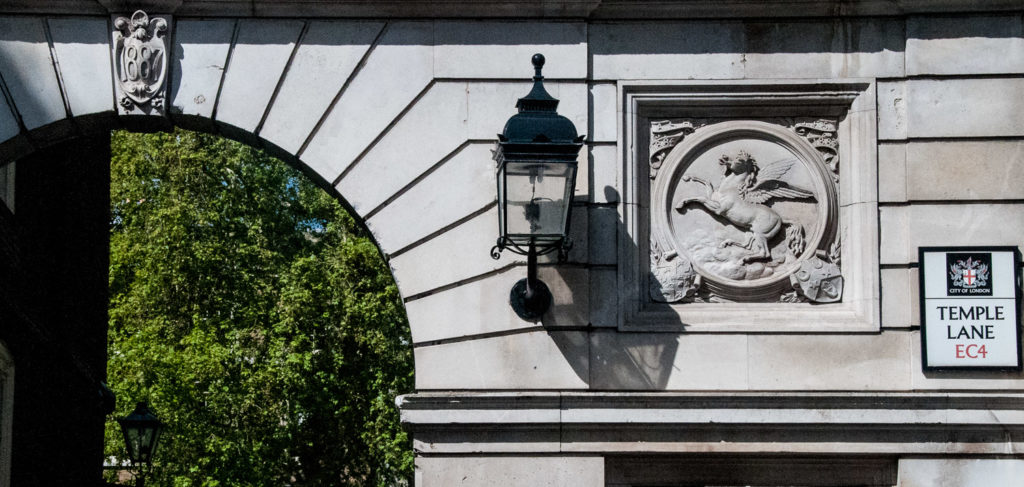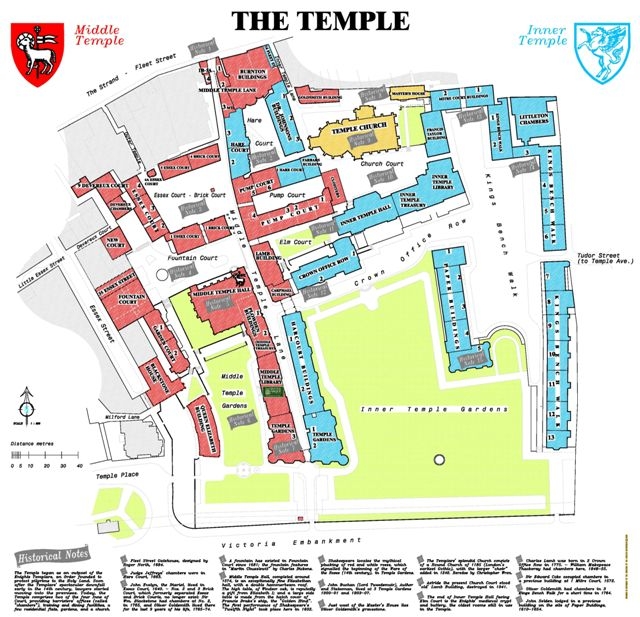The west end of Fleet Street belongs to the lawyers. You can leave the noise and bustle of the main roads and enjoy the tranquility of the Inns of Court, where you can still glimpse through the windows book-stuffed rooms and ribbon-bound briefs. I am going to write about The Temple, the area in the vicinity of Temple Church which consists of two of the four Inns of Court – the Inner Temple and Middle Temple. There is map at the end of the blog to help you navigate.
I entered the Middle Temple from Fleet Street through the archway beneath Prince Henry’s Room at number 17, one of the few buildings still around today that survived the Great Fire of 1666 …
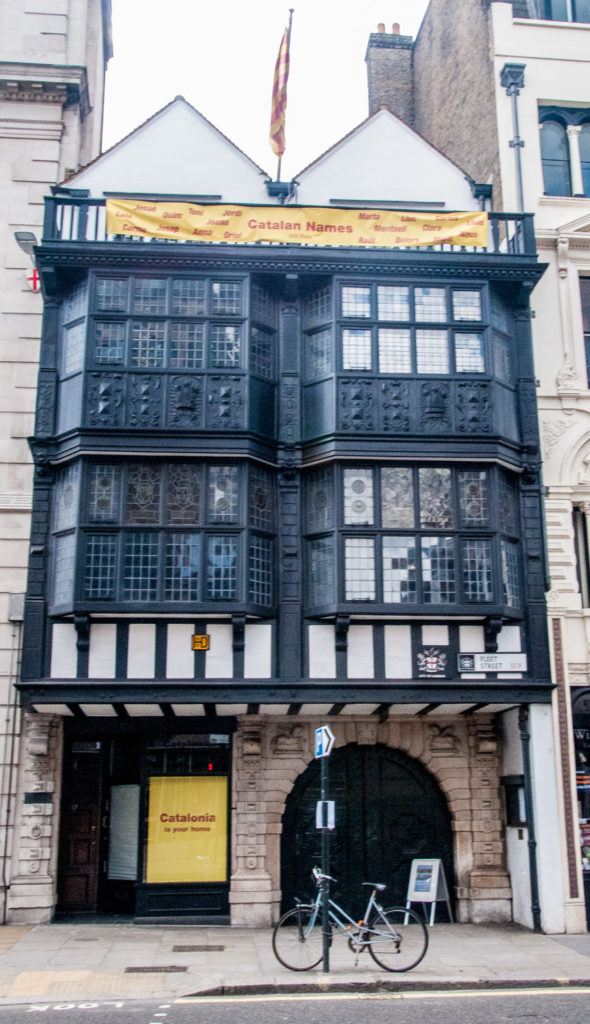
Once called the Fountain Tavern, Samuel Pepys visited it on 28 November 1661 and wrote in his diary …
To the Fountain tavern and there stayed till 12 at night, drinking and singing, Mr. Symons and one Mr. Agar singing very well. Then Mr. Gauden, being almost drunk, had the wit to be gone; and so I took leave too.
Sadly you can’t drink or sing there now since it is not open to the public.
As you walk down Middle Temple Lane, look back and you can see the posts that support the 17th century buildings above. I read somewhere that Dr Johnson used to enjoy swinging around these when in an exuberant mood …
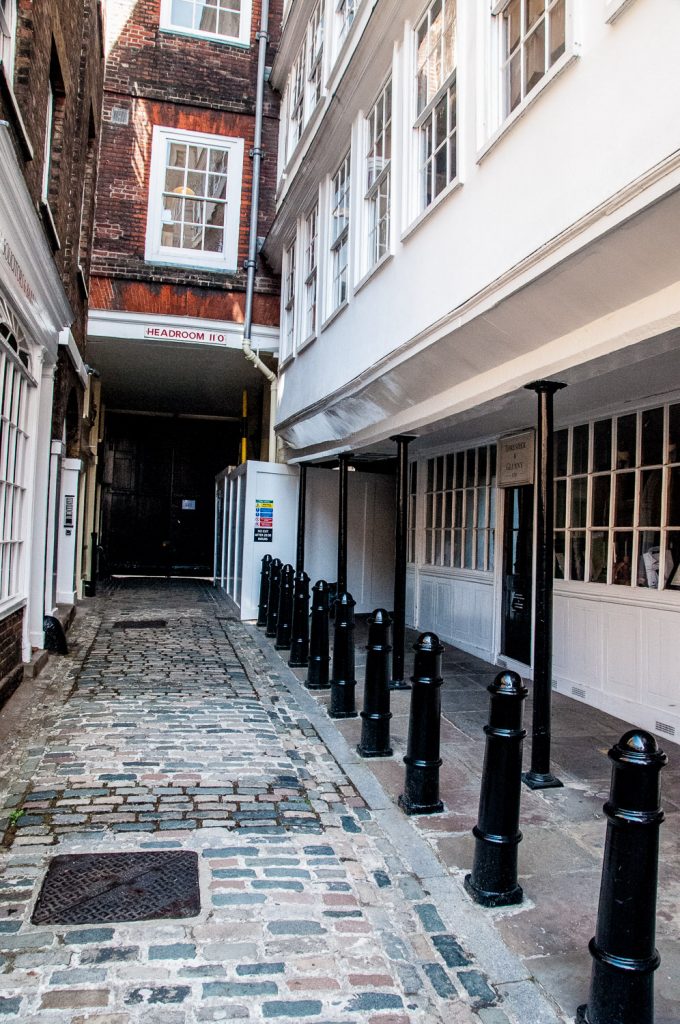
On your right as you walk down the Lane is Fountain Court where there is a Mulberry tree planted in 1887 to celebrate Queen Victoria’s Jubilee …
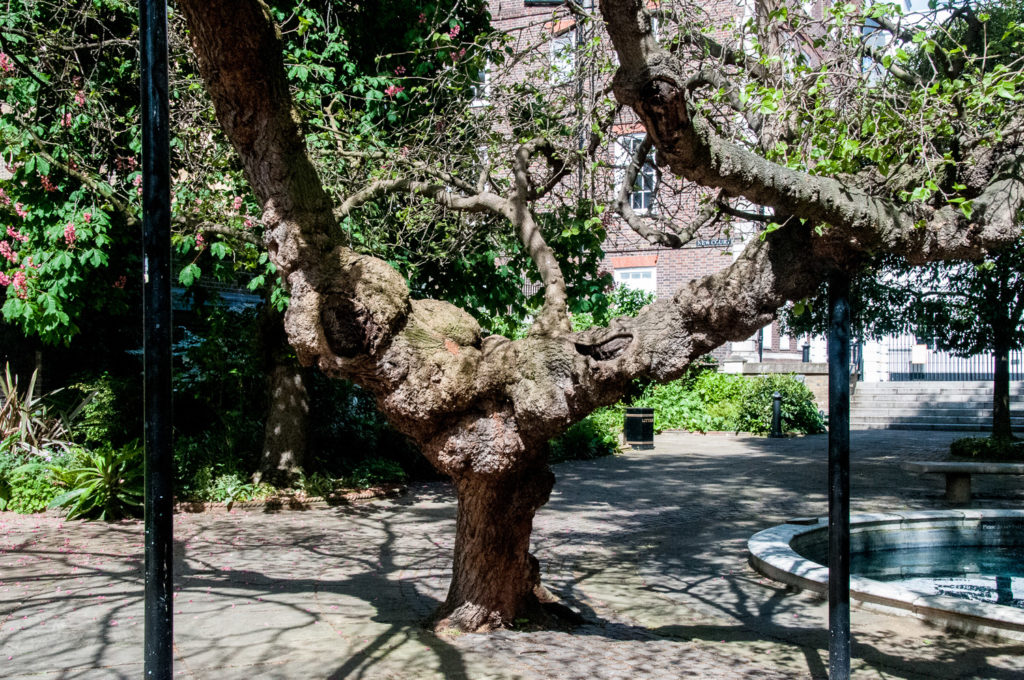
Nearby is the 16th Century Middle Temple Hall where Shakespeare’s company first performed Twelfth Night in February 1602.
Go down the steps to the left of the fountain and you can walk alongside Middle Temple Gardens. The giant Triffid-like plant on the right is an Echium …
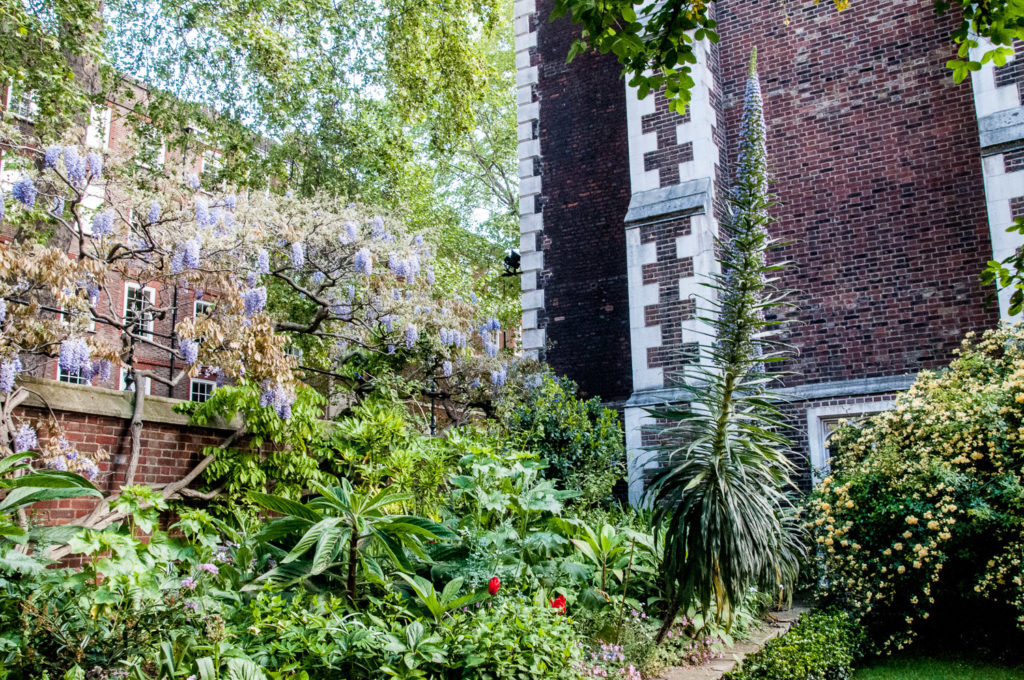
The Middle Temple has kept a garden, in various forms, for centuries – indeed Shakespeare’s Henry VI, Part I, refers to the ‘Temple Garden’ as the location for an argument between York and Lancaster, complete with the plucking of red and white roses, which led to the War of the Roses. There doesn’t seem to be any contemporary evidence for this, however.
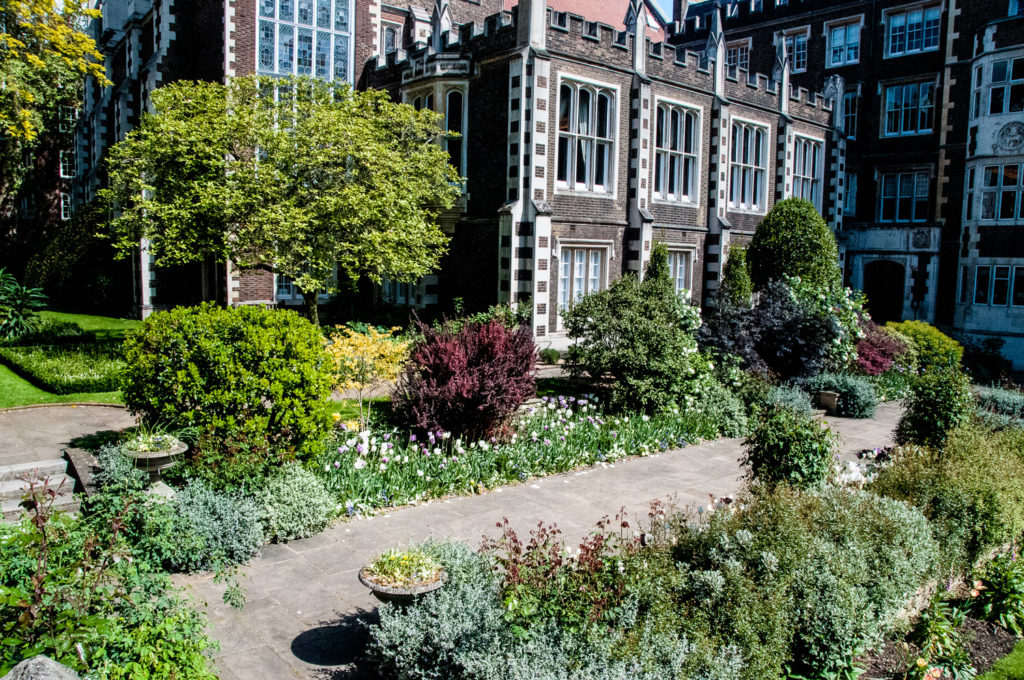
Retrace your steps and walk through Pump Court to Church Court pausing in Essex Court to admire this old gas lamp …
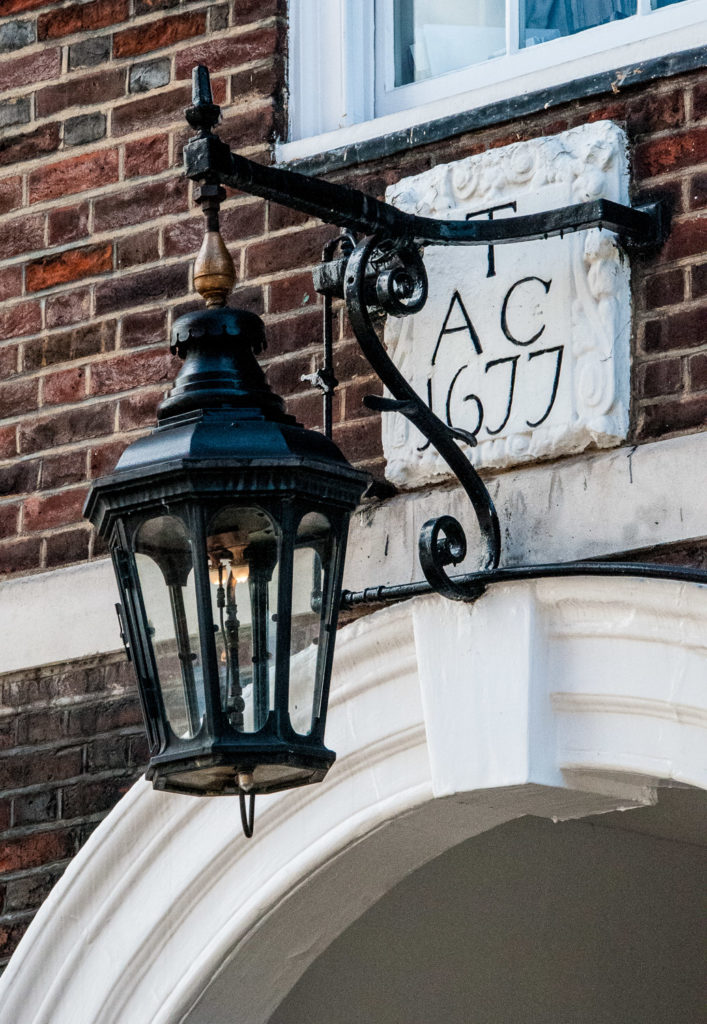
Not surprisingly, in Church Court you will find the Temple Church after which the area is named. Originally built by the Knights Templar as their English headquarters, it was consecrated on 10th February 1185 by Heraclius, the Patriarch of Jerusalem. It was built in the round to remind worshippers of the Jerusalem Church of the Holy Sepulchre …
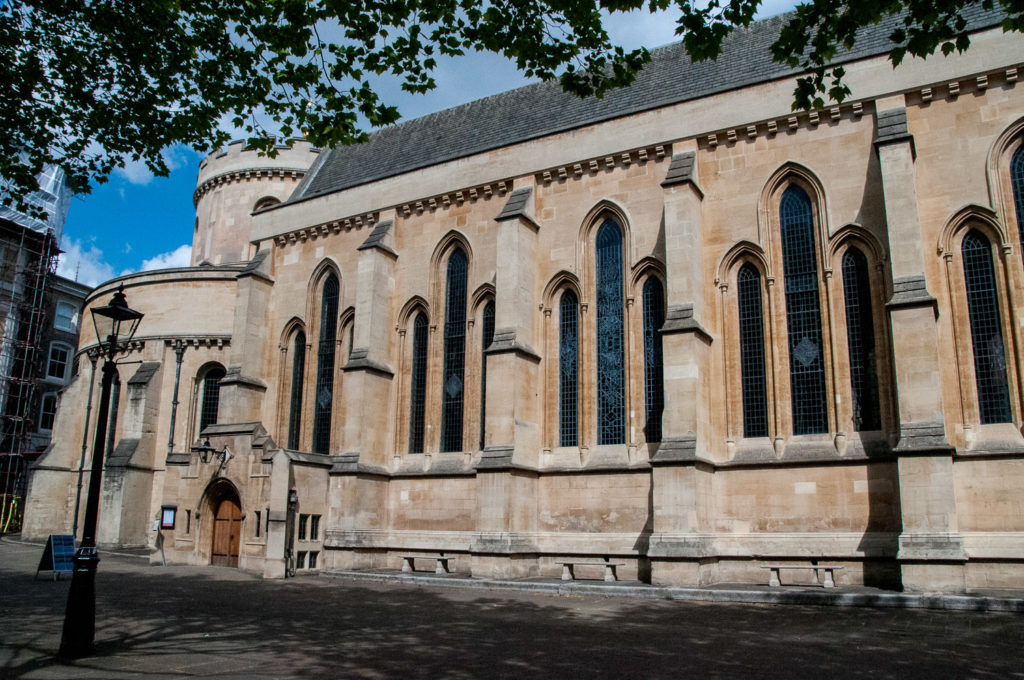
Outside the door of each Chambers is a list of the barristers who practise there or are ‘door tenants’ who do not but who have a connection with the Chambers …
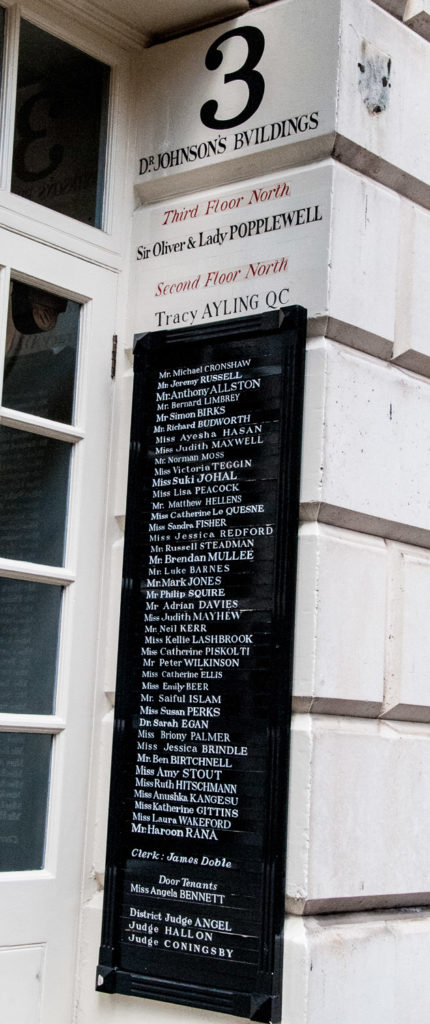
Some have accommodation in Chambers – the author John Mortimer practised as a barrister and had rooms here in Dr Johnson’s Buildings.
You will see frequent representations of the symbol of Middle Temple, the Lamb and Flag or Agnus Dei. These two are in different styles, an older one on Plowden Buildings in the distance and a post war 1954 version in the foreground …
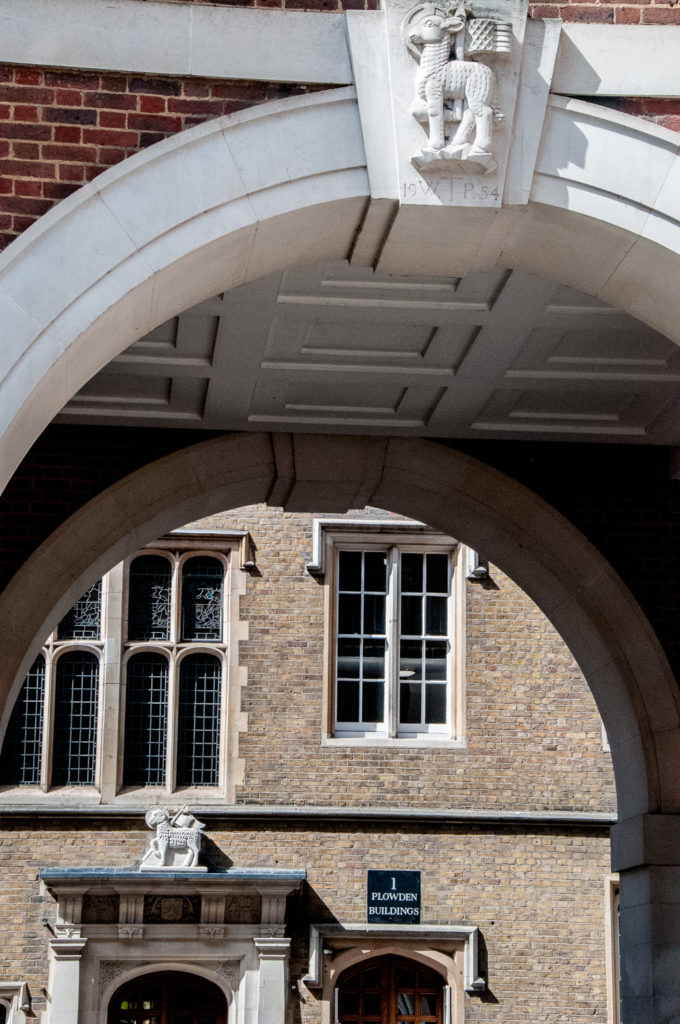
Pegasus, the winged horse, is the emblem of the Middle Temple …
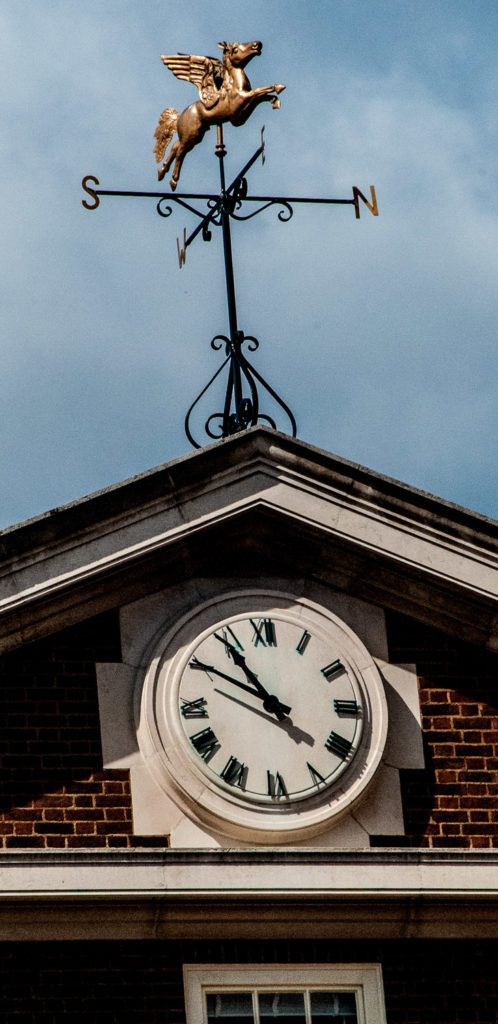
If you leave by the Tudor Street Gate and look back you can admire the gate design and see another winged horse …
